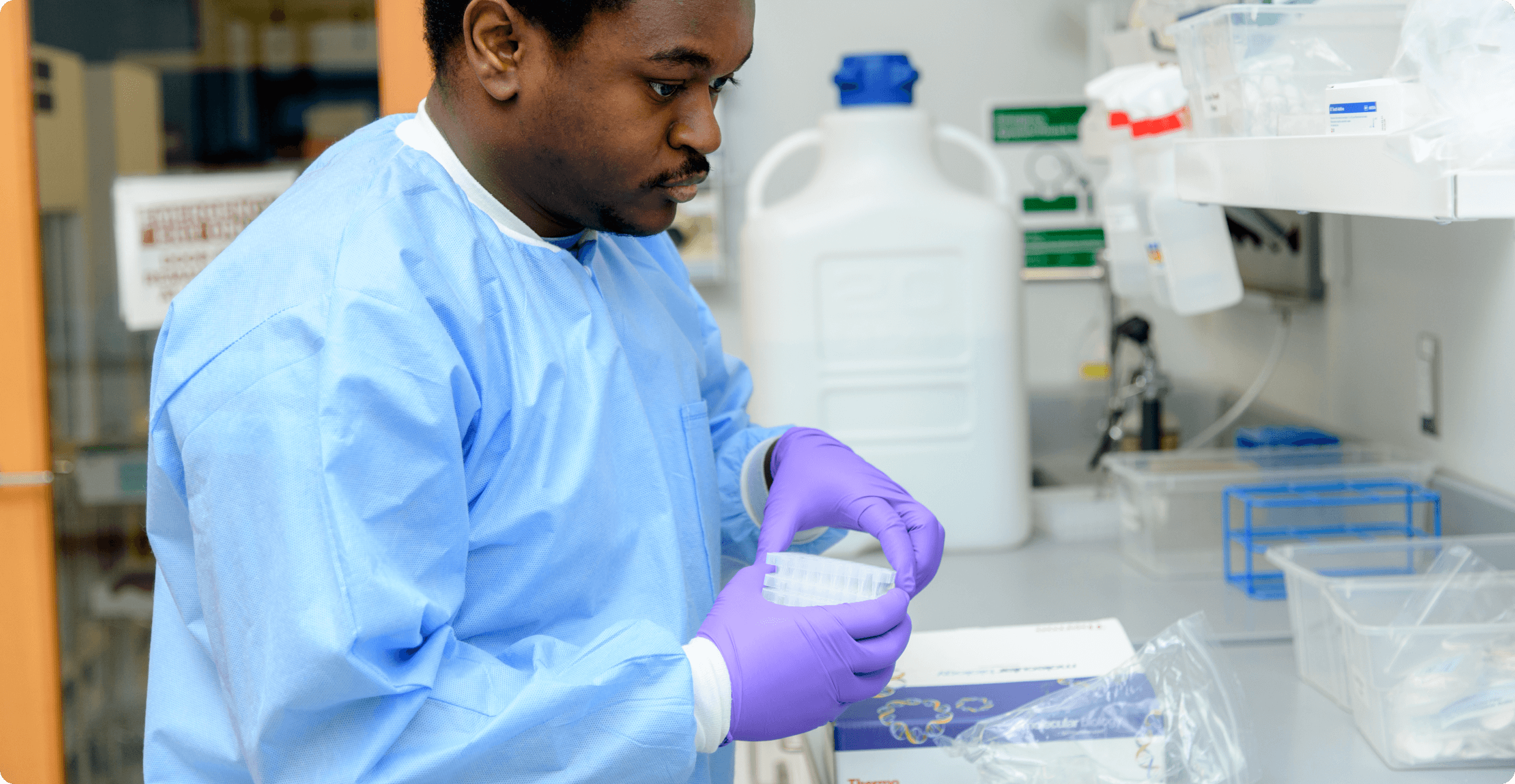Blog | Aug. 30, 2023
MRD in AML: the next step in fighting leukemia

NGS-based Plasma-Safe-SeqS (PSS) cell-free DNA (cfDNA) detection platform delivers unparalleled dynamic range enabling high resolution of treatment response providing deeper insights into efficacy of new therapies. Serial monitoring capacity and earlier detection of disease recurrence is driving a new era of optimism and is accelerating the pace of drug discovery and therapeutic development to enable new treatment alternatives, and renewed hope for cancer patients.
Flexibility and utility of PSS facilitates treatment selection at diagnosis and early detection of resistance to therapy. Analysis of ctDNA in plasma reduces the risk of missing clinically-actionable mutations in cancer patients due to tumor heterogeneity. Moreover, as blood draws for liquid biopsy are minimally invasive, there is little potential for either inadequate material for analysis or complications arising from obtaining the needed sample.
An additional benefit of liquid biopsy is the turnaround-time to test results; typically 5-7 days vs. 15-30 days for tissue biopsy. This reduced time enables clinicians to make more timely decisions to put the patient on an effective therapy earlier, and this alone may greatly benefit progression-free and overall survival.
PSS technology is ideally suited for:
Ultra-high sensitivity is essential for reliable detection of extremely small quantities of ctDNA that may be present post-intervention, as well as for early identification of increasing ctDNA levels which may signify relapse.
In a report published in Science Translational Medicine in 2014, “Detection of circulating tumor DNA in early- and late-stage human malignancies”,1 PSS technology was used to measure ctDNA in a wide range of tumor types from both localized and metastatic disease. The range of copies of ctDNA in plasma vary significantly, and this technology approaches the sensitivity-level of single-molecule detection.
As Sysmex Inostics’ PSS technology only requires 2mL of plasma for ctDNA analysis, a 0.05% mutant allele frequency (MAF) sensitivity can be achieved with the analyte being detected 95% of the time.
With a highly sensitive technology like PSS, it becomes clear that nearly 50% of patients have ctDNA detected below 1% MAF. A survey of plasma samples from patients with advanced, treated and/or recurrent disease shows the importance of higher sensitivity. In metastatic colorectal cancer a full 48% of patients have mutated RAS <1% MAF. For EGFR-mutated T790M in non-small cell lung carcinoma (NSCLC) the percentage of samples with <1% MAF was 42% and for estrogen-receptor positive HER2-negative (ER+/HER2-) breast cancer, 45% of samples had mutated PIK3CA at <1% MAF.2
PSS technology is designed to preserve mutant molecules throughout the workflow, leaving a more robust sample to identify patients even with extremely low-level ctDNA. Other assays, particularly broad, hybrid-capture-based pan-cancer panels, are known to lose up to 40% of all input DNA during sample prep, which decreases reliable detection of ctDNA. This is a differentiating feature of the PSS technology.
Ultra-sensitive technology allows clinical trial sponsors to screen fewer patients to achieve sufficient study enrollment, leading to significantly accelerated clinical trial timelines, reduced costs, and improved trial outcomes.
Assuming a conventional limit of 1% MAF for liquid biopsy, what are the economic consequences of using less-sensitive technologies? For head and neck squamous cell carcinoma (HNSCC), where a low-frequency HRAS mutation status (5% of the target population) is used for a clinical trial, a full 89% of the mutant HRAS patients have MAF less than 1%.3 Therefore to obtain 50 patients with mutant HRAS, the difference between having sensitivity of 1% vs. 0.05% for PSS means that there will be an approximately nine-fold difference in screening populations – from over 9,000 to only 1,000 patients needing testing.
While liquid biopsy testing has clear advantages for improving patient management and transforming clinical trial development for novel therapies, not all liquid biopsy approaches demonstrate the same level of performance. The utility of any liquid biopsy for a specific clinical intended use must be considered within the context of an assay’s analytical and clinical performance in order to truly improve patient outcomes and expedite clinical trial development.
Several ctDNA tests on the market claim limits of detection that are well-below 1%, often down to 0.1%. Yet for several NGS-based methods, an examination of their technical specifications or their analytical validation publications reveal that their analytical sensitivity drops precipitously at less than 0.5% MAF. For example, one liquid biopsy service provider claims 98.9% analytical sensitivity at >0.5%, but drops to only 67.3% at a target MAF of 0.1 to 0.49%.4
PSS technology has demonstrated sensitivities down 0.05% MAF and does not have this kind of drop-off in analytical sensitivity below 0.5% MAF.
A recent publication compared four liquid biopsy service providers using identical plasma samples matched to tissue. These four tests were sensitive and specific to only 1% MAF, regardless of their claims, with almost all the positive calls less than 1% identified to be false positives.5
Thanks to the ultra-high sensitivity of the PSS technology, new applications for liquid biopsy are possible. For example, in the setting of breast cancer serial monitoring, utilization of a highly sensitive assay can detect disease recurrence after administration of adjuvant therapy and may allow change in therapeutic decision-making.
PSS is a low error rate (“safe”) technology, where each DNA molecule is assigned a unique identifier (UID), and UID families are amplified and deep sequenced. The PSS platform discriminates real mutations from errors potentially introduced during the amplification and sequencing process, resulting in more accurate mutation detection.
To learn more about Plasma-Safe-SeqS or other purpose-designed clinical oncology tests from Sysmex Inostics, click here.
References: